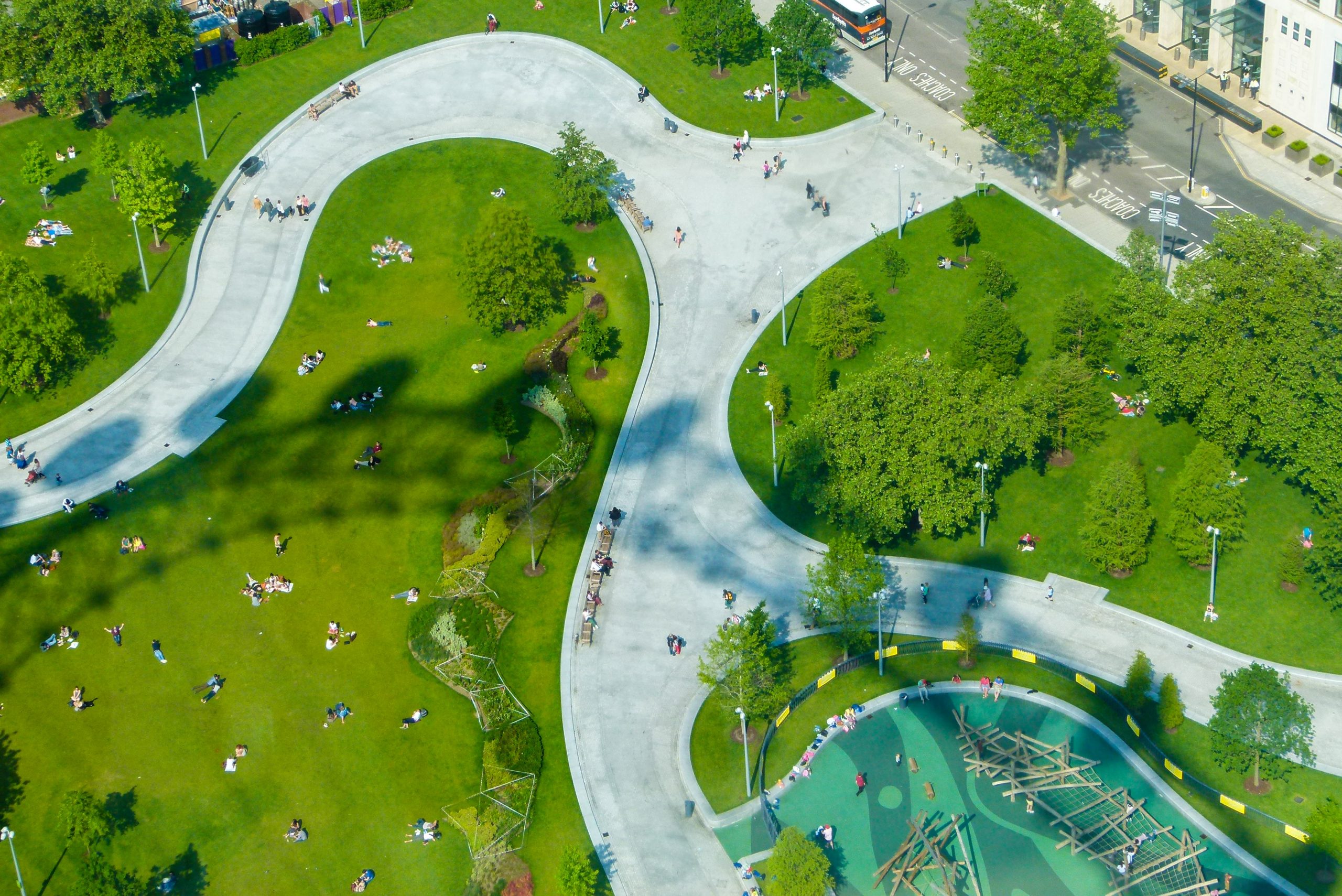Whenever people hear that my bachelor's education is in landscape architecture but I focus on user experience (UX) research and design they get a little surprised. It’s usually easy to tell because of their facial expressions. It changes from "cool" to "wait a second, what?". Then, usually, I get the same question right after the expression: What does this have to do with user experience?
User experience practitioners come from a variety of backgrounds like psychology, computer science, graphic design. I wanted to add one more field to the list 🙂
Here is a quick recap of the intersection between landscape architecture and UX, mixed with a little bit of personal experience. Instead of trying to come up with a long post to conquer the search engine results world, I'll limit myself to five points.
1. Research
Every UX article starts with research, so let’s not break the rules. Throughout my landscape architecture education the word "Research" was mentioned all the time for every single project (except the first one) because when you design something, you do it for other people to use. You might not even be in the city or country where your design will take place in. Therefore you need to know your target group and what their needs are. How your design will improve their lives? After all, you are creating spaces where people will walk, rest, play, gather, etc...
This would start with learning about the public space by looking at a map or reading a little about the area to going out to observe how people use that space and talk to them. You need to design desirable paths. Desk research, observation, and user interviews. If possible surveys.
The appeal of desire paths has taken a further twist in the digital age as human-computer interaction and usability designers have begun adopting the language of these intuitive routes. How Desire Paths Can Lead to Better Design
This part, research, was very interesting and I really enjoyed doing it. I like listening to people, trying to learn about their experiences, understanding their pain points and needs to come up with solutions. And I still do it for my UX related work.
We aim to understand why people do what they currently do, with the goal of understanding what they might do in the future. Tom Kelley, Creative Confidence
2. Creativity

You can keep sketching and coloring your work to make it look nice. You can write down amazing ideas and come up with the dream park for kids to play. Sure, those palm trees would look amazing there. Can’t even think about a playground corner without that very specific material, are you kidding me? That’s what we were encouraged to do for our very first project; go creative and we did for a semester. It was easy and fun to “design” a private garden for that long.
When the first semester was over, it was time to face reality; Limitations. Climate, budgets, material availability, and environmental fit. Yes, we didn’t think about choosing the right plants to use when we were working on our first project. We didn’t even question the location of that private garden, we were more into putting some lines and colors on a paper.
Remember those palm trees that would look amazing? Turns out they are not always the right choice because of the climate. That very specific material (we probably found online) for the playground? Not available in the country and would cost a lot of money to order. No need to mention the maintenance and how much it would cost to build our projects, they weren't even a discussion topic.
As it’s written in all the design-related posts: Design isn’t just about making things look appealing. It’s about solving problems and coming up with creative solutions while working with limitations. Who doesn’t enjoy a challenge like this?
Design is the intentional solution to a problem within a set of constraints. Mike Monteiro, Ruined by Design
3. Universal Design - Design for All
If you want everyone to take place in public life, your design needs to be inclusive. Parks, campuses, and other outdoor areas can’t be just available for young or healthy people. In other words, the design needs to answer the needs of people with different abilities. Universal design helps to do that.
In the universal design class sometimes we would go for a field practice where we would go out to investigate the city, do roleplay or observe people for an hour, take notes, analyze the spatial relationship, and write reports. You can’t do a roleplay for every user group but at least trying to experience some of them is still more useful than just reading the regulations. If we are not out, then we would be learning about regulations and discussing how to improve outdoor spaces for all. This was the moment that I was fascinated by research that informs design.
Accessibility, inclusive design, and universal design are terms that I keep hearing in the UX world. Small differences in practice but the mindset, or approach, is the same.
4. Design Feedback
Building your design work on a 1:1 scale for testing purposes was not an option, so we had bi-weekly feedback classes. We would present our work and reasons for any changes in the project and then get feedback from our peers and faculty members. Classic architecture education. Sometimes a little boring but usually very useful, especially in the long term. Learning how to receive and give feedback takes a lot of time, it requires practice.
Good feedback makes you a better creative because it helps you learn from your experiences as you hone your craft. It can also help you identify pitfalls of a design solution and give you a more focused sense of direction. Design Feedback
5. Documentation

It is great that you spent your time to come up with this design, thanks. Time to hand it over for people to build it. Every single measurement and decision matters. That's why it is better to keep an up-to-date document with actionable steps and explanations rather than coming up with a last-minute "final report". It can help you as a landscape architect to go through your design steps in the process to make sure everything is right and clear, so people can build your design without you being present in the field.
Wait, I meant as a UX specialist handing over your research outcomes to a designer. Sorry, I got confused again. I wanted to say as a designer when handing over your design to engineers.
This article was published on the UX Collective.
